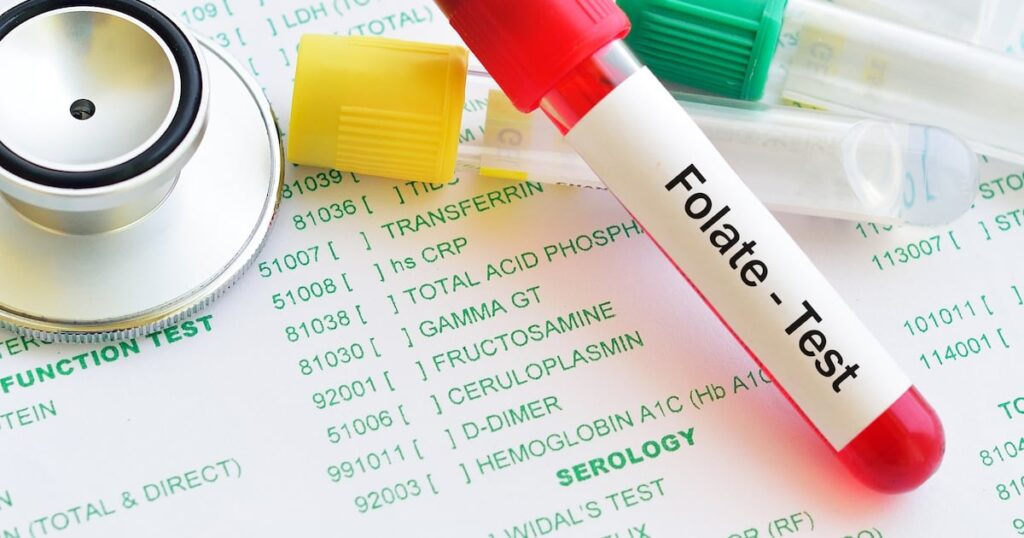Published in Food & Nutrition Research, the randomized, double-blind, controlled crossover study aimed to evaluate the relative bioavailability of Optifolin+ versus standard folic acid, comparing their pharmacokinetic profiles over 24 hours in healthy men and women (aged 29-40).
Researchers from BioTeSys and the Universities of Applied Sciences and Hospital of the Saarland, Germany, found that plasma concentrations of L-5-MTHF, the bioactive form of folate that is used by the body to support vital cellular functions, were significantly higher following Optifolin+ intake compared to those after folic acid.
Optifolin+ also increased folate status (as 5-MTHF) by more than 240% as compared to folic acid, and the increase was achieved significantly faster, reaching maximum plasma levels of L-5-MTHF in less than one hour compared to 2.8 hours in the folic acid group.
Additionally, Optifolin+ did not increase blood levels of unmetabolized folic acid (UMFA). Balchem highlighted this is an important finding, as UMFA has no known biological function and high levels of UMFA have been linked to health risks.
“Optifolin+ is the bioactive, choline-enriched L-5-MTHF form of folate, meaning it bypasses the metabolic bottlenecks and genetic hurdles that folic acid faces entirely,” said Eric Ciappio, PhD, senior manager of nutrition science at Balchem HNH (Human Nutrition and Health).
“These new study findings demonstrate how leveraging the bioactive form translates to real bioavailability advantages for consumers,” he added. “Optifolin+ also goes a step further—providing seven times the methyl groups found in standard folate forms for methylation support, as well as excellent solubility and stability for ease of formulation.”
Lauren Eisen, senior marketing & business development manager of minerals and nutrients at Balchem, said another exciting element of this trial is the broad demographics of participants.
“While many studies have previously focused on women— due to the prominence of folate in prenatal nutrition—this new study expanded the scope to include healthy men and women across a wide age range and saw significant benefits,“ she said. ”Now, with clinically-backed superior bioavailability in this wider population, as well as a seven-times methyl group advantage, Optifolin+ offers a powerful tool for supplement brands to create next-generation solutions to support health at all stages of life.”
Methodology
After randomization and a 10-hour fasting period, participants in the current study attended the BioTeSys site to receive their test or placebo product, provided as hard gelatine capsules (containing 906 nmol folate).
Venous blood samples were collected immediately before intake of products and then 15 min, 30 min, 1 h, 1.5 h, 2 h, 3 h, 4 h, 6 h, 8 h, and 24 h thereafter. Subjects received standardized meals for the 24 hour period.
After a washout period of 14 days, participants returned to the study site and received the second substance under the same protocol.
Delivering bioactive folate
Also known as vitamin B9, folate is an essential nutrient that supports fundamental cellular functions and the production of key molecules such as DNA and RNA, amino acids, neurotransmitters and hormones.
Well established for its benefits in prenatal nutrition, the vitamin’s role providing methyl (CH3) groups for DNA methylation, homocysteine metabolism and other crucial reactions in the body means that folate as L-5-MTHF also plays a key role in the lifelong support of brain health and cognitive function, cardiovascular health and epigenetic health.
Currently, many supplements and fortified food and beverages rely on folic acid as a source of folate. However, folic acid is a synthetic form of vitamin B9, which must undergo several enzymatic conversion steps within the body to become the biologically active form, L-5-MTHF.
Up to 31% of the European population and 40% of the U.S. population carry variations in the MTHFR gene that can reduce the activity of the enzymes responsible for the final conversion of folic acid into L-5-MTHF. For these individuals, Balchem’s team argues traditional folic acid supplementation may not provide optimal folate status.
Source: Food & Nutrition Research,69. doi: 10.29219/fnr.v69.12633. “Pharmacokinetics of (6S)-5-Methyltetrahydrofolate dicholine salt compared to folic acid: a randomized double-blind single dose cross-over study”. Authors: Schön C., et al.

